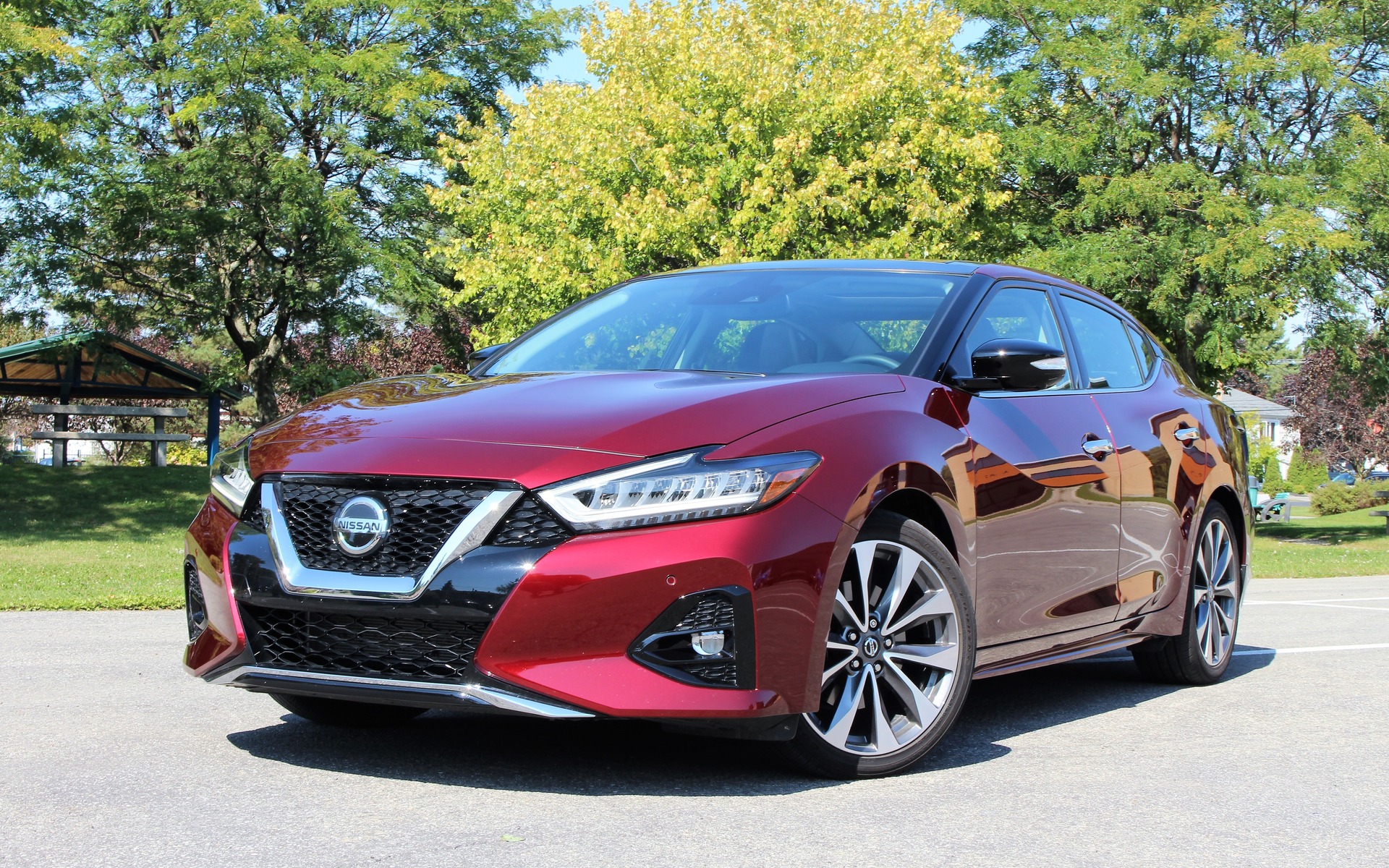2019 Nissan Maxima: The Salesman’s Luxury Car


It’s starting to get dusty up in the full-size sedan segment, as North American consumers are deserting their cars for SUVs. While the automotive manufacturers don’t seem too depressed about it, people who still prefer cars than trucks have less choice than before, and it’s only going to get worse.
The Nissan Maxima has been the brand’s flagship sedan for quite a while now, and the car itself is in search of an identity, now that luxury brands are offering more affordable—albeit smaller—cars that are also more fashionable.
Read also
The segment in which the Maxima competes in will be shrinking considerably in the next year. The Buick LaCrosse, the Chevrolet Impala and the Ford Taurus will retire after 2019, while the Kia Cadenza will soon leave the Canadian market as well. That leaves the Dodge Charger, the Chrysler 300, the Toyota Avalon, the new Volkswagen Arteon and the Maxima.
Aside from the Charger, sales of all these cars are down in 2019 compared to 2018—in Canada and in the United States. Of course, the Arteon has only been around for a few months, but its $48K price will prevent it from selling in big numbers.

The 2019 Nissan Maxima is equipped with a 3.5-litre V6 that develops 300 horsepower and 261 pound-feet of torque, managed by a continuously variable automatic transmission. That output is sent to the pavement through the car’s front wheels, like in the Avalon. Meanwhile, the Charger and the 300 are rear- or all-wheel drive, while the Arteon is AWD only.
The midsize Nissan Altima has been redesigned for the 2019 model year, and in Canada, it now gets standard all-wheel drive. That doesn’t bode well for the Maxima who must share the showroom floor. Like the Toyota, we must consider the Maxima more as a driver’s sedan than a family-oriented vehicle, not because they’re not spacious, but because they boast a sportier character.
Yet, the 2019 Nissan Maxima’s performance isn’t particularly thrilling. Sure, it accelerates with authority, but its driving dynamics aren’t all that sharp. Then again, it’s more of a luxury sedan that can pick up some serious speed if we feel the need for it.
The Max’s V6 engine boasts a combined city/highway rating of 9.9 L/100 km, beaten only by the Avalon in its category. However, super unleaded is required in the Nissan, which obviously means a high fuel bill. We managed to soften the blow with an observed average of 9.0 L/100 km during our test.
While front-seat space is sufficient, back-seat passengers will lament the lack of headroom and legroom, which trail all other full-size sedans. The Maxima still looks good as it’s been around in its current form since the 2016 model year, but that low roofline also reduces the window surface. The cockpit feels cramped given the car’s size. The trunk is also the smallest in its category.

On the other hand, fit and finish approaches what we’d find in luxury-branded cars. The Platinum variant we drove included what Nissan calls Premium Ascot leather upholstery, while the mid-range SR gets a mix of cowhide and Alcantara. The NissanConnect infotainment system boasts an eight-inch touchscreen whose graphics look dated, but the console-mounted multifunction knob helps make browsing through menus easier while driving. Apple CarPlay and Android Auto integration comes standard as well.
Starting at $40,790 before freight and delivery charges, the 2019 Nissan Maxima SL does offer a long list of standard features. It includes LED headlights and taillights, a dual-pane sunroof, a navigation system, front and rear park sonar, dual-zone climate control, adaptive cruise control, a remote engine starter, leather, heated front and rear seats, a heated steering wheel, an 11-speaker Bose sound system, forward collision warning with autonomous emergency braking and blind spot monitoring. No other rival offers this much as this price level.
We particularly like the $43,190 SR trim level, which adds paddle shifters, black 19-inch alloy wheels, a sport-tuned suspension, ventilated front seats, a charcoal headliner and more. The Platinum is the poshest version of the three with a 360-degree camera system, a power-adjustable steering column, a rear window sunshade and driver’s seat position memory. Still a good deal at $45,650.
The Avalon is its most direct rival, and we like it better for a few reasons. Namely, it rides on a stiffer platform and consumes slightly less fuel—unleaded fuel—in addition to being more accommodating. The Arteon is gorgeous and its fastback makes it more practical. The Charger and 300 are also appealing but wouldn’t be so without the availability of the 5.7-litre HEMI V8. Yeah, we like horsepower and engine roar at the expense of higher fuel consumption.
Stuck between the more sensible Altima and the Infiniti Q50, which is smaller but sportier, the Maxima’s future looks bleak. However, there is one thing it does well, and that’s to offer the experience of a luxury car, but with a mainstream-brand badge. For salespeople who visit customers, the Maxima makes perfect sense; it’s upscale enough to flaunt our success, but not expensive enough to give the impression that we’re overcharging for our products and services. Now, all it has to do is convince consumers that it’s an appealing as an SUV.








